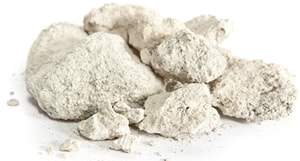
Limits for drinking water: calcium – at least 30 mg/l (ppm), magnesium – at least 10 mg/l (ppm)
- Creation of limescale in a kettle, washing machine, boiler, heating and piping
- White stains on glass and metallic parts of sanitary
- Dry skin after showering / bathing
- Decreasing the efficiency of heat exchangers and other devices (reverse osmosis, nozzles) until complete clogging
- Increased consumption of detergents
Softening of hard water
- Principle of ion exchange
Increased hardness is most often a problem with groundwater. However, the legislative limit is only for its minimum value. The recommended limit (2.0 to 3.5 mmol / l) is determined only for nutritional significance and does not take into account other uses. It is therefore quite common that water with high hardness is distributed through public water supply system. 40% of the Czech population is supplied with water of hardness 2 mmol/l or higher, which is already a value causing problems (water with a hardness of 1.25 to 2.50 mmol / l is referred to as medium hard).
In households only minor problems occur, such scale in the kettle and stains on glasses and chrome parts of wash basins and bathtubs. Hard water, however, can quickly destroy the washing machine (by covering the heater with scale, the washer engine gets stuck and broken) or the boiler (by blocking it). However, the limescale gradually fills up piping and reduces the flow of water.

Many complications occur in industry. Pumps, heat exchangers, boilers, filtration systems, all this gets clogged with limescale, efficiency decreases and the devices can even get destroyed. Subsequent cleaning is difficult, can cause damage to the appliance, or is even impossible.
That is why the water is softened, most often by ion exchange. The water hardness is reduced immediately at the entrance to the building and all the aforementioned problems are eliminated. For drinking water the softening is only partial to maintain nutritional values, industrial water is often softened completely (to almost zero hardness).

